Species
{{start}}
{{end}}
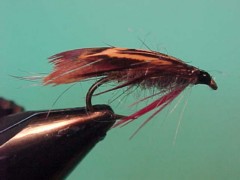
{{+1}}Murdoch{{-1}}
{{start}}
Another old fly this little beauty has its origins on the salmon and trout streams of Ireland probably around the 1820's. Its alternative name of 'hares ear and red' gives away its ancestry. Early versions of the fly presented were no more than a gold ribbed hares ear with a woodcock type wing tied on top. Over time the recipe has evolved.{{end}}
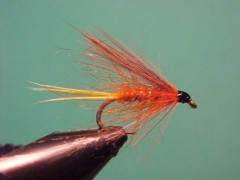
{{+1}}Dunkeld – Chatto’s fuzzeled variant{{-1}}
{{start}}
The Dunkeld is certainly one of my top 5 middle dropper flies for lock style fly fishing. Until 18 months ago I was using a version of the Dunkeld that had a hackle Palmered along the body as in the original. At that time I was experimenting with "fuzzeled" bodies an an alternative to bodies with a Palmered hackle and applied that technique to this fly with immediate success.{{end}}
{{+1}}Rivers – traditional up stream nymphing{{-1}}
{{start}}
This is the first river fishing technique that I was introduced to and is probably the most widely used technique used by recreational fly fishers in Australia and New Zealand and the UK.{{end}}
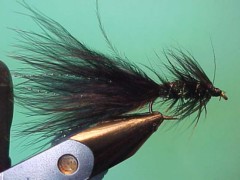
{{+1}}Sparkle bugger{{-1}}
{{start}}
Woolly buggers and their variants would have to be close to the quintessential wet fly. This woolly bugger version is one of my favourate late season still water flies.{{end}}
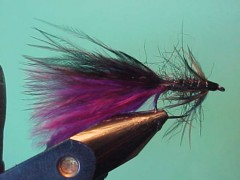
{{+1}}Tassi bugger – Chatto’s version{{-1}}
{{start}}
I was introduced to this variation in the lead up to the 2002 Tasmanian One Fly which by chance I won. Whilst I was not comfortable enough to use this fly in that contest I have used it many times since to great effect.{{end}}
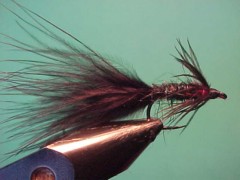
{{+1}}Bibio bugger – Chatto’s original{{-1}}
{{start}}
There are a few flies that I have absolute confidence in and consequently have no hesitation in tying them on if I am in unknown territory and am up for a bit of prospecting. This fly is really a merging of two of them and it is so consistent that its has earned its own place amongst my top 10 or so trout flies. The two flies that were merged to form this fly were of course the bibio and the standard black woolly bugger. Whilst the bibio still holds its own place in my top 10 or so trout flies this bibio bugger has displaced the standard black woolly bugger.{{end}}

{{+1}}Mini woolly buggers{{-1}}
{{start}}
In recent years I have found that other than the traditional woolly bugger of around 50 mm in length there is also a demand for very small woolly buggers. In fact I would go as far as to say that in most of the fisheries that I haunt 'mini woolly buggers' of from 25 mm to 30 mm in length are often more effective than the larger versions on which they are based. I have narrowed down the mini woolly bugger selection that I carry to just brown, black, black with a red thread head and olive versions.{{end}}
{{+1}}Rivers – up stream wet under dry (duo and trio){{-1}}
{{start}}
There is a reason why up stream fishing is probably the most widely used technique used by fly fishers in Australia and New Zealand and the UK - it works.{{end}}
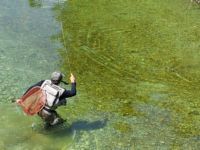
{{+1}}Rivers – French leader / longer leader set up{{-1}}
{{start}}
"French leader" or often called "French Roll Casting" came to my attention in 2009 through the competition sports fly fishing scene. At that stage I was president of Fly Fish Australia and also had the honour on being on one of its international representative teams. This technique was all the buzz and to those that had the opportunity to embrace it the technique was fantastic in the right water.{{end}}
{{+1}}Rivers – short line nymphing{{-1}}
{{start}}
Whilst in the broad terms these techniques are really quite similar to each other there are subtle points of difference that distinguish each of these forms of river fly fishing techniques. The points of difference are mainly in the leader set up and focus on leader lengths and the use of different flies and materials incorporated into the leader as indicators. I think of all these techniques all as "short line nymphing techniques" and adjust my leader set up, fly selection, drift and the direction I am moving in as I encounter different types of water.{{end}}













